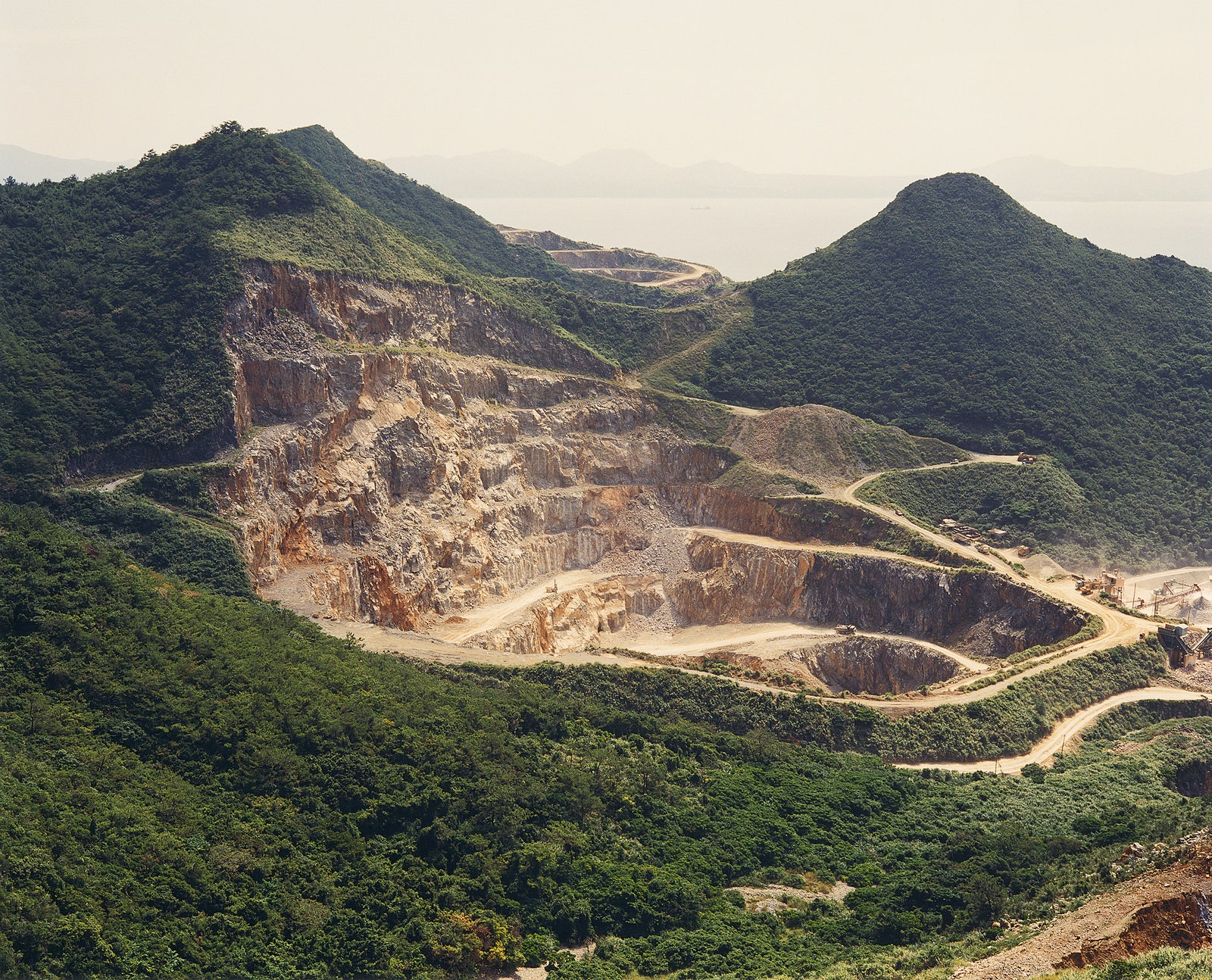
Production of Space and Creative Destruction in the Photographic Work of Naoya Hatakeyama
##plugins.themes.immersion.article.figure##

Abstract
The photographic work of Naoya Hatakeyama is an extensive visual example of how natural resources serve as a fuel of capitalist production. In his three major series – Lime Hills (1986- 91), Lime Works (1991-94), and Untitled (1989-2005) – Hatakeyama focuses on limestone to connect the world of natural landscape with the world of urban built structures. In Blast (1995- 2008), the destructive force of capitalism and its devastating influence on the environment become literal: natural material is being torn into pieces in order to build a city. From exploitation of limestone hills, through the manufacture of concrete, to the construction of skyscrapers in a late capitalist city – the photographs transform the process of annihilation of rural space into timeless evidence of the humankind’s domination over the natural environment. With his photographic bodies of work, Hatakeyama follows the idea of Henri Lefebvre (The Production of Space, 1974) showing how nature is reduced to means of urban space production. What is fundamental to capitalism’s destructive domination over the environment, is not only the possession of space, but also the ability to absorb, produce, and constantly transform it.
References
- Abbe, Dan. “Naoya Hatakeyama.” In Photographers” Sketchbooks, edited by Stephen McLaren and Bryan Formhals, 118–25. London: Thames & Hudson, 2014.
- Bartolini, Stefano. “Building Sustainability through Greater Happiness.” The Economic and Labour Relations Review 25, no. 4 (2014): 587–602.
- Barthes, Roland. Camera Lucida. 2000. London: Vintage, 2000 [1980].
- Benton, Ted. “Marxism and Natural Limits: An Ecological Critique and Reconstruction.” New Left Review 178 (1989): 51–86.
- Cheng, Wendy. “‘New Topographics’: Locating Epistemological Concerns in the American Landscape.” American Quarterly 63, no. 1 (2011): 151–62.
- Ciscel, David H., and Julia A. Heath. “To Market, to Market: Imperial Capitalism’s Destruction of Social Capital and the Family.” Review of Radical Political Economics 33, no. 4 (December 18, 2001): 401–14.
- Coral, Mireille, Jeff Noonan, and Paul Chislett. “Destructive Creation.” Alternate Routes: A Journal of Critical Social Research 27, no. 1 (2016): 313–25.
- Debord, Guy. The Society of the Spectacle. London: Rebel Press, 2005 [1967].
- Harvey, David. “The Urban Process under Capitalism: A Framework for Analysis.” International Journal of Urban and Regional
- Research 2, no. 1–3 (1978): 101–31.
- Harvey, David. Justice, Nature, and the Geography of Difference. Oxford: Blackwell, 1996.
- Hatakeyama, Naoya. Blast. Tokyo: Shogakukan, 2013.
- Hatakeyama, Naoya. “Lime Works.” In Naoya Hatakeyama: Excavating the Future City, edited by Yasufumi Nakamori, 251– 58. New York: Aperture, 2018.
- Heilbroner, Robert L. “Technology and Capitalism.” Social Research 64, no. 3 (1997): 1321–25.
- Kellner, Douglas. “Media Culture and the Triumph of the Spectacle.” Fast Capitalism 1, no. 1 (2005): 58–71.
- Lefebvre, Henri. The Production of Space. Oxford: Blackwell, 1991 [1974].
- Marx, Karl. Grundrisse. Foundations of the Critique of Political Economy. London: Penguin, 1993 [1939].
- Nakamori, Yasufumi. “Photographs of Site/Land That Transcend Time.” In Naoya Hatakeyama: Excavating the Future City, edited by Yasufumi Nakamori, 7–22. New York: Aperture, 2018a.
- Nakamori, Yasufumi. “I: Birth/Genesis.” In Naoya Hatakeyama: Excavating the Future City, edited by Yasufumi Nakamori, 23–81. New York: Aperture, 2018b.
- Nakamori, Yasufumi. “III: Trans/Flux.” In Naoya Hatakeyama: Excavating the Future City, edited by Yasufumi Nakamori, 125– 84. New York: Aperture, 2018c.
- Reinert, Hugo, and Erik S. Reinert. “Creative Destruction in Economics: Nietzsche, Sombart, Schumpeter.” In Friedrich Nietzsche (1844-1900): Economy and Society, edited by J.G. Backhaus and W. Drechsler, 55–85. Boston: Springer, 2006.
- Roberts, John. “Photography, Landscape and the Social Production of Space.” Philosophy of Photography 1, no. 2 (2010): 135–56.
- Rosenberg, Elissa. “Picturing the Landscape: The New Topographics and the Rise of a Post-Industrial Landscape Aesthetic.” In Monument – Patrimony – Heritage. Industrial Heritage and the Horizons of Terminology, edited by S. Bogner, B. Franz, H.R. Meier, and M. Steiner, 222–29. Holzminden: Jörg Mitzkat, 2018.
- Schumpeter, Joseph Alois. Capitalism, Socialism and Democracy. London: Routledge, 2010 [1942]. Sombart, Werner. Der Moderne Kapitalismus. München; Leipzig: Duncker & Humblot, 1927 [1902]. Sontag, Susan. On Photography. London: Penguin, 2008 [1977].
- Walker, K. J. “Ecological Limits and Marxian Thought.” Politics 14, no. 1 (1979): 29–46.